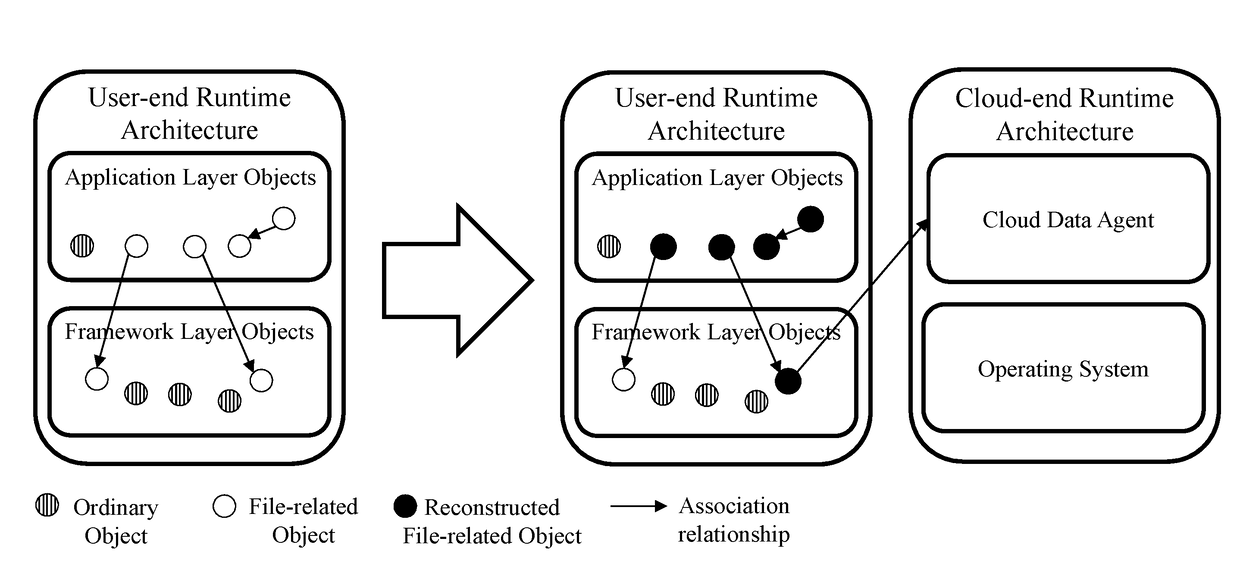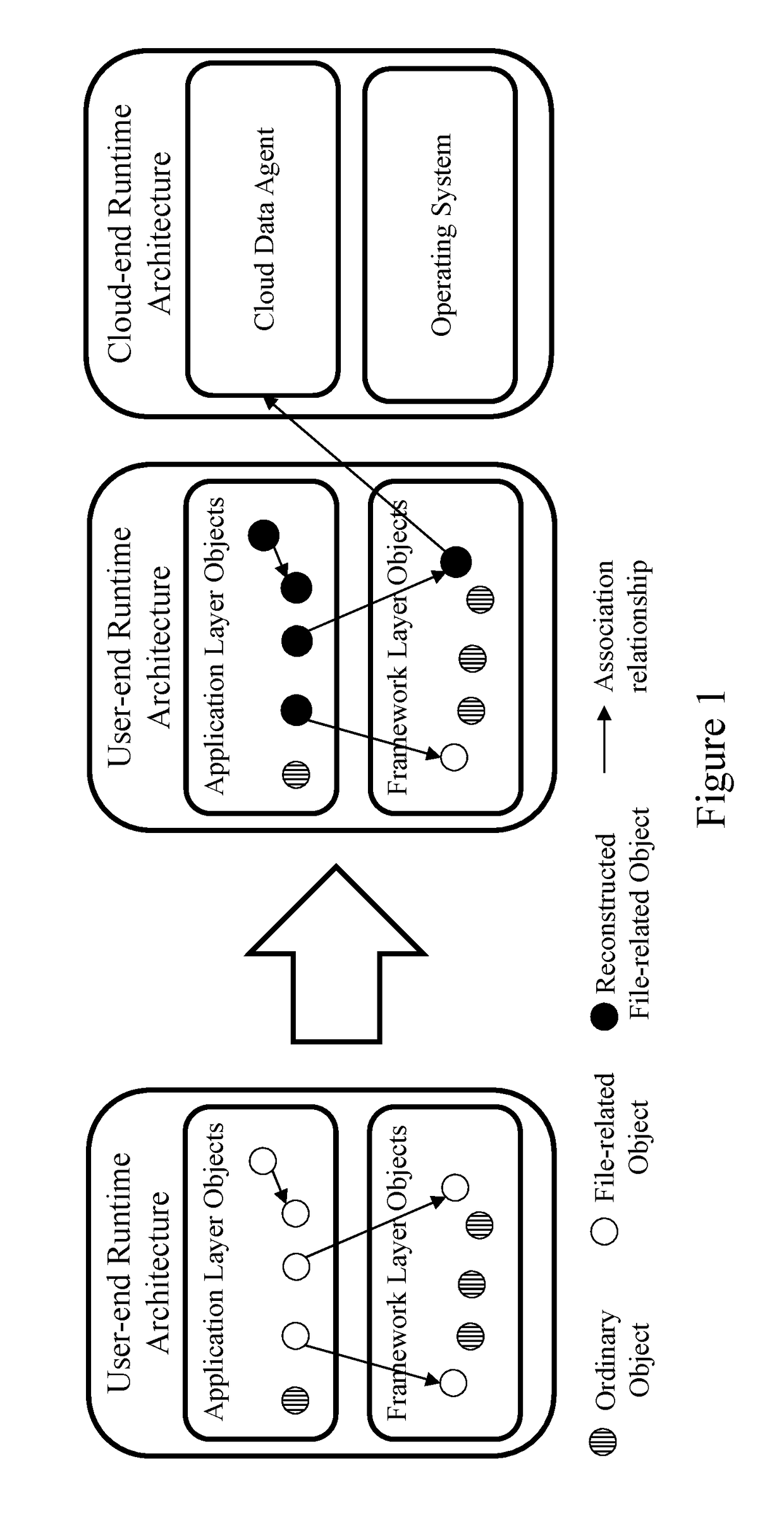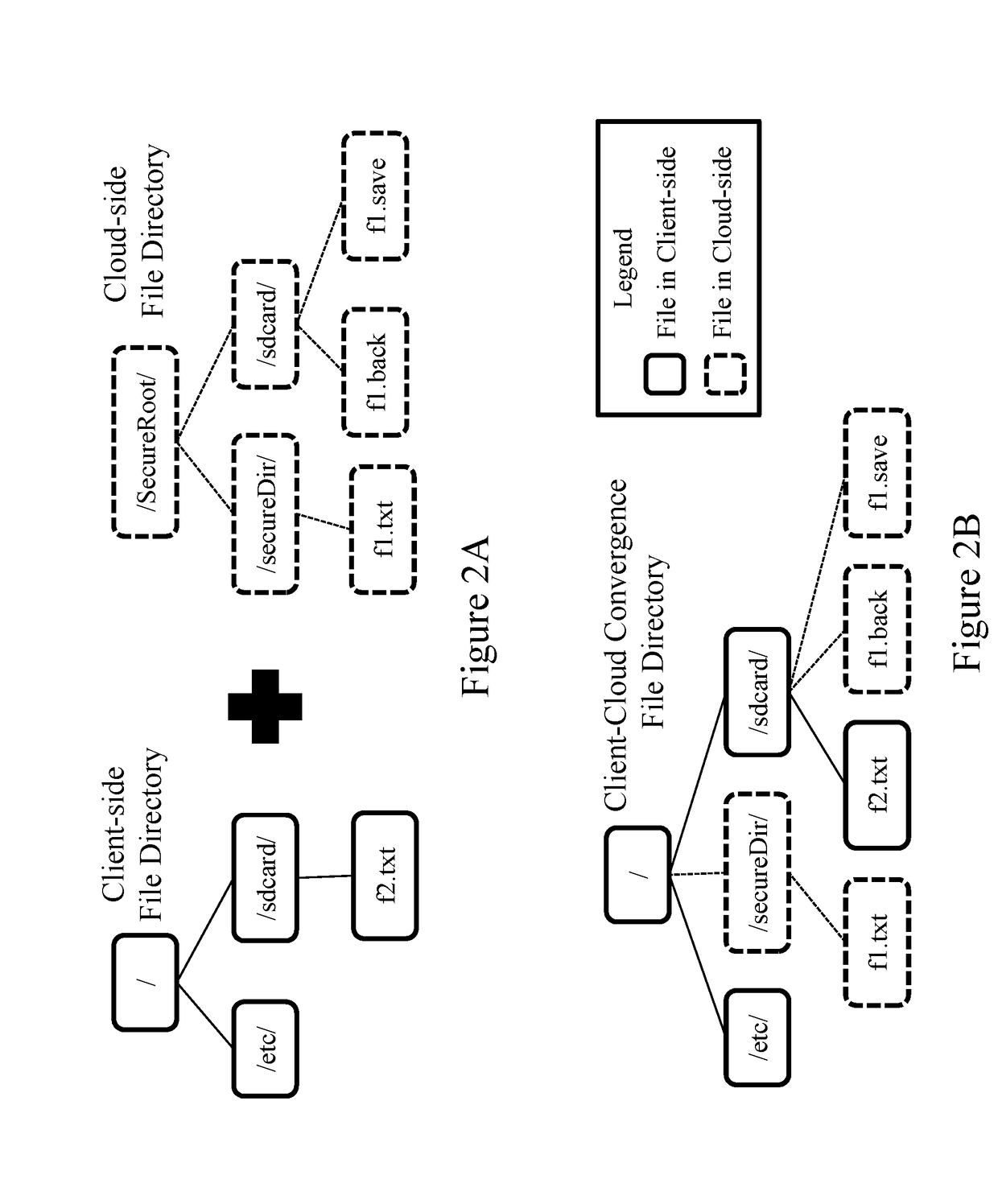Method for Locking Sensitive Data in the Cloud Based on Refactoring Technology
- Summary
- Abstract
- Description
- Claims
- Application Information
AI Technical Summary
Benefits of technology
Problems solved by technology
Method used
Image
Examples
implementation example
[0041]
[0042]This section gives the implementation of cloud-client data fusion in Android applications. Here is a section of code, for example, describes the refactoring process examples and refactored run-time architecture examples.
[0043]FIG. 3A shows the above described code before the refactoring of the code. Three file related objects are generated: first, new File (paramString) produced a File object; Second, the File object was passed to Open( )as a parameter, then a ParcelFileDescriptor object was produced; the third is the use of ParcelFileDescriptor object getFileDescriptor( ) operation produced a FileDescriptor object. Among the three objects, the first is created by the new keyword, the second by the factory ParcelFileDescriptor.open function; the third is generated by common operation getFileDescriptor of the framework layer object ParcelFileDescriptor.
[0044]The code after refactoring is shown in FIG. 3B, including the refactoring of three file objects:
[0045]1. The object...
PUM
 Login to View More
Login to View More Abstract
Description
Claims
Application Information
 Login to View More
Login to View More - R&D
- Intellectual Property
- Life Sciences
- Materials
- Tech Scout
- Unparalleled Data Quality
- Higher Quality Content
- 60% Fewer Hallucinations
Browse by: Latest US Patents, China's latest patents, Technical Efficacy Thesaurus, Application Domain, Technology Topic, Popular Technical Reports.
© 2025 PatSnap. All rights reserved.Legal|Privacy policy|Modern Slavery Act Transparency Statement|Sitemap|About US| Contact US: help@patsnap.com



